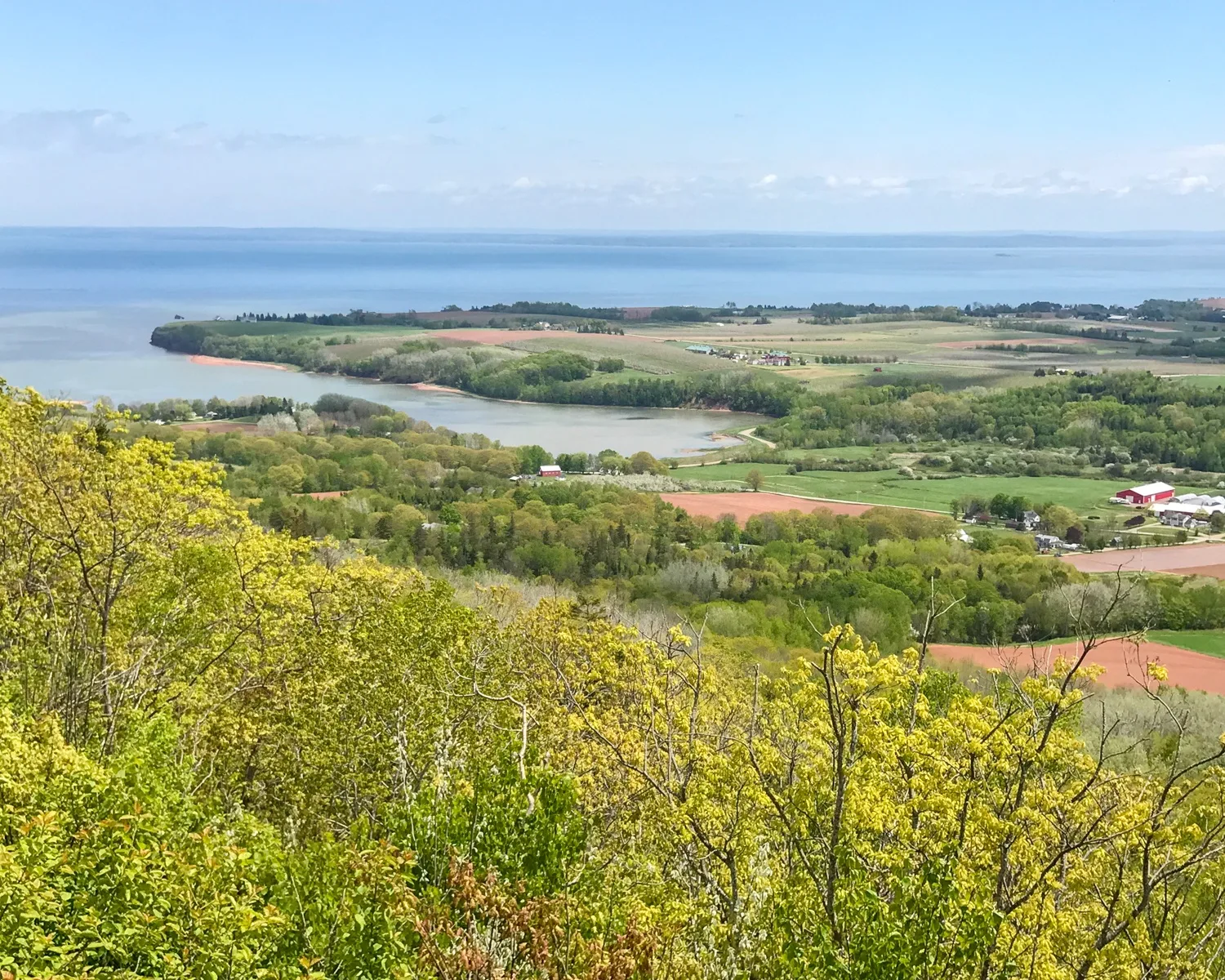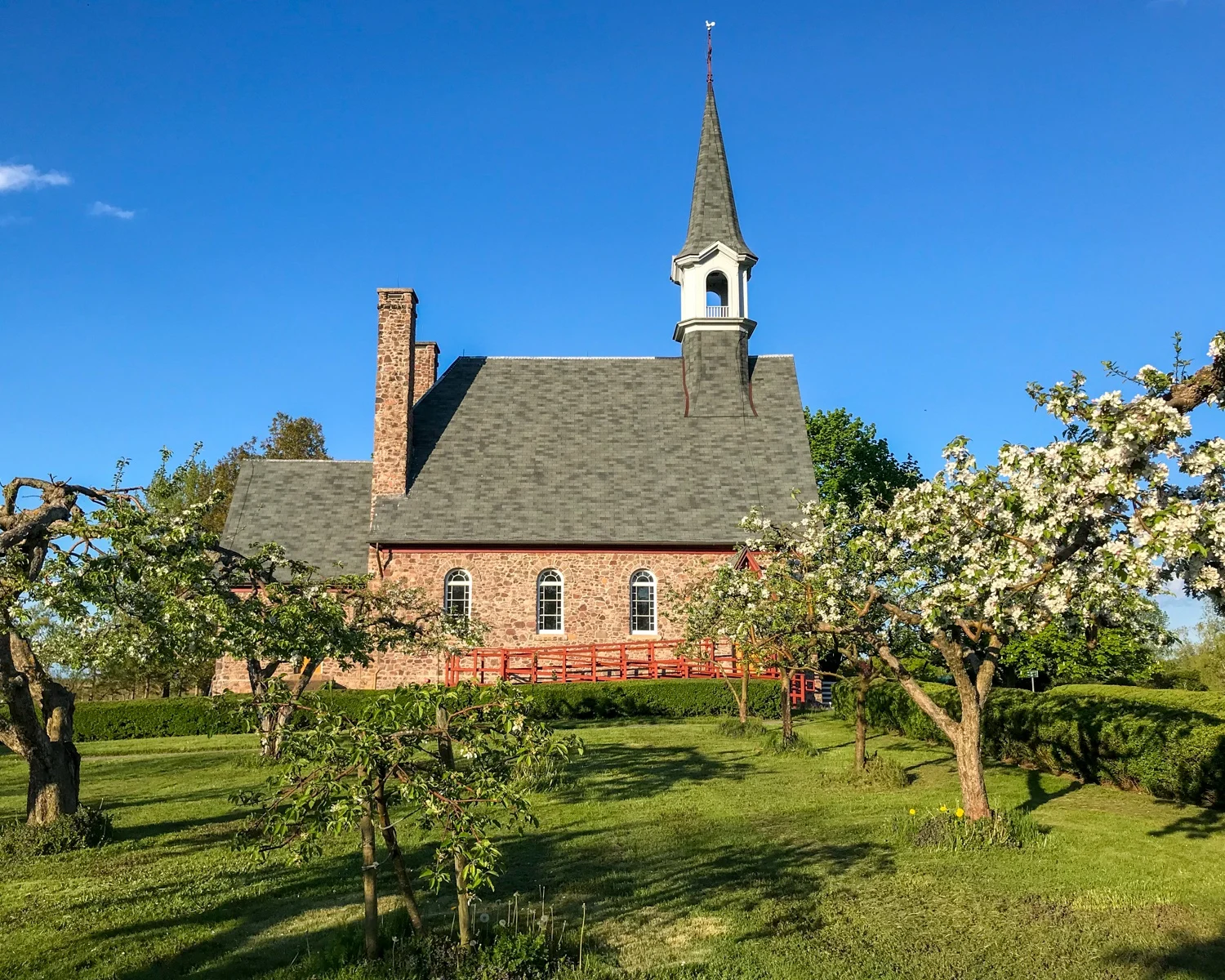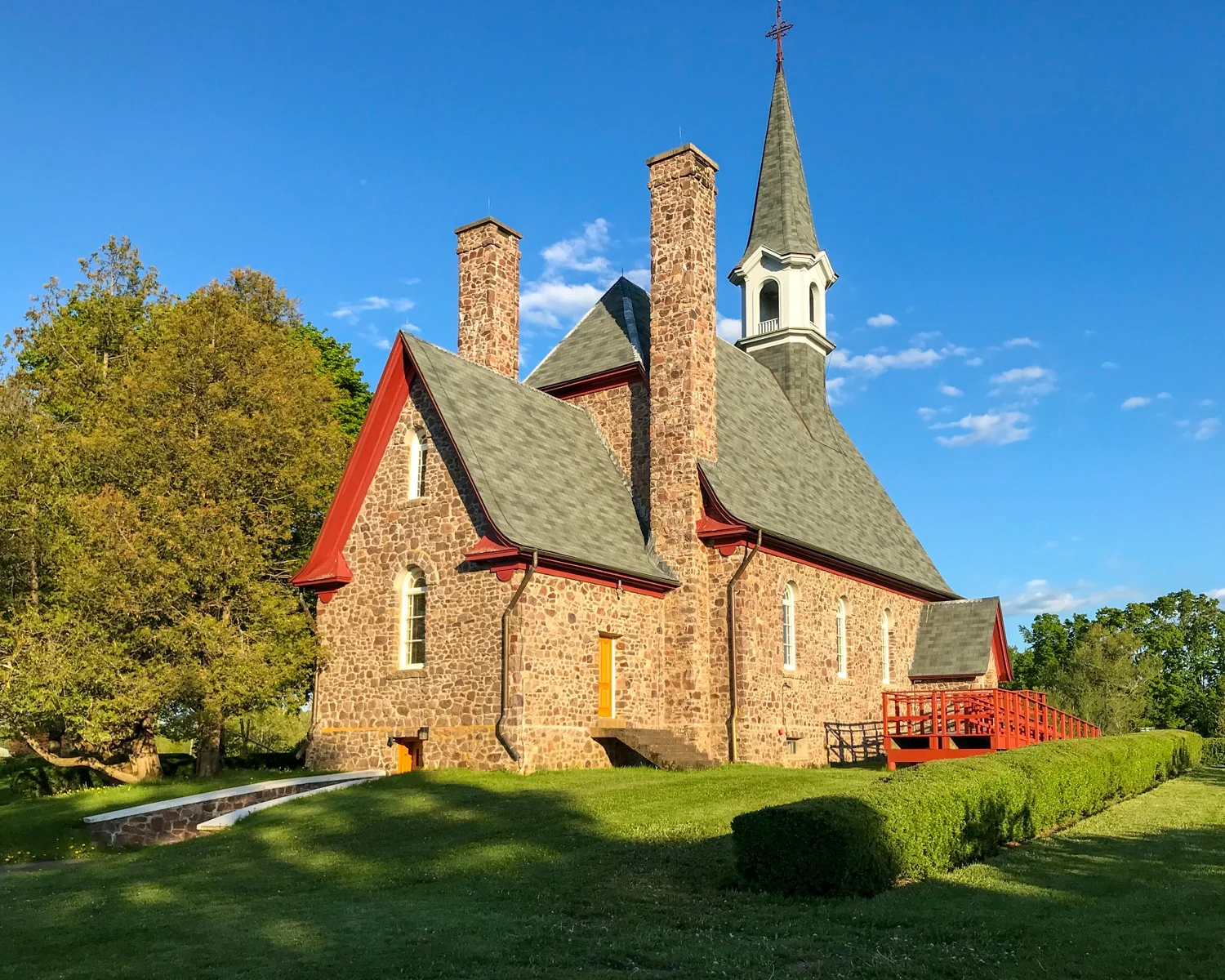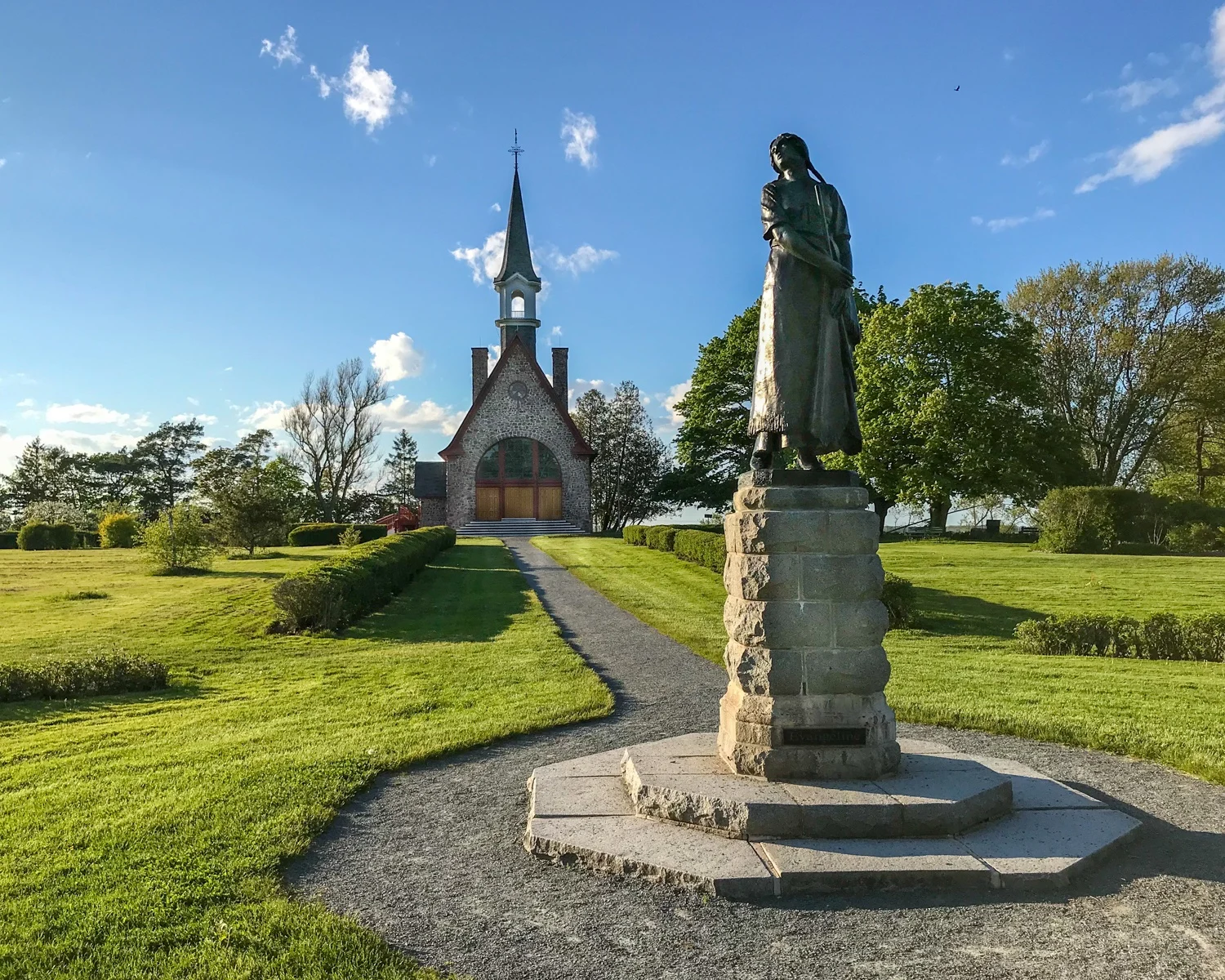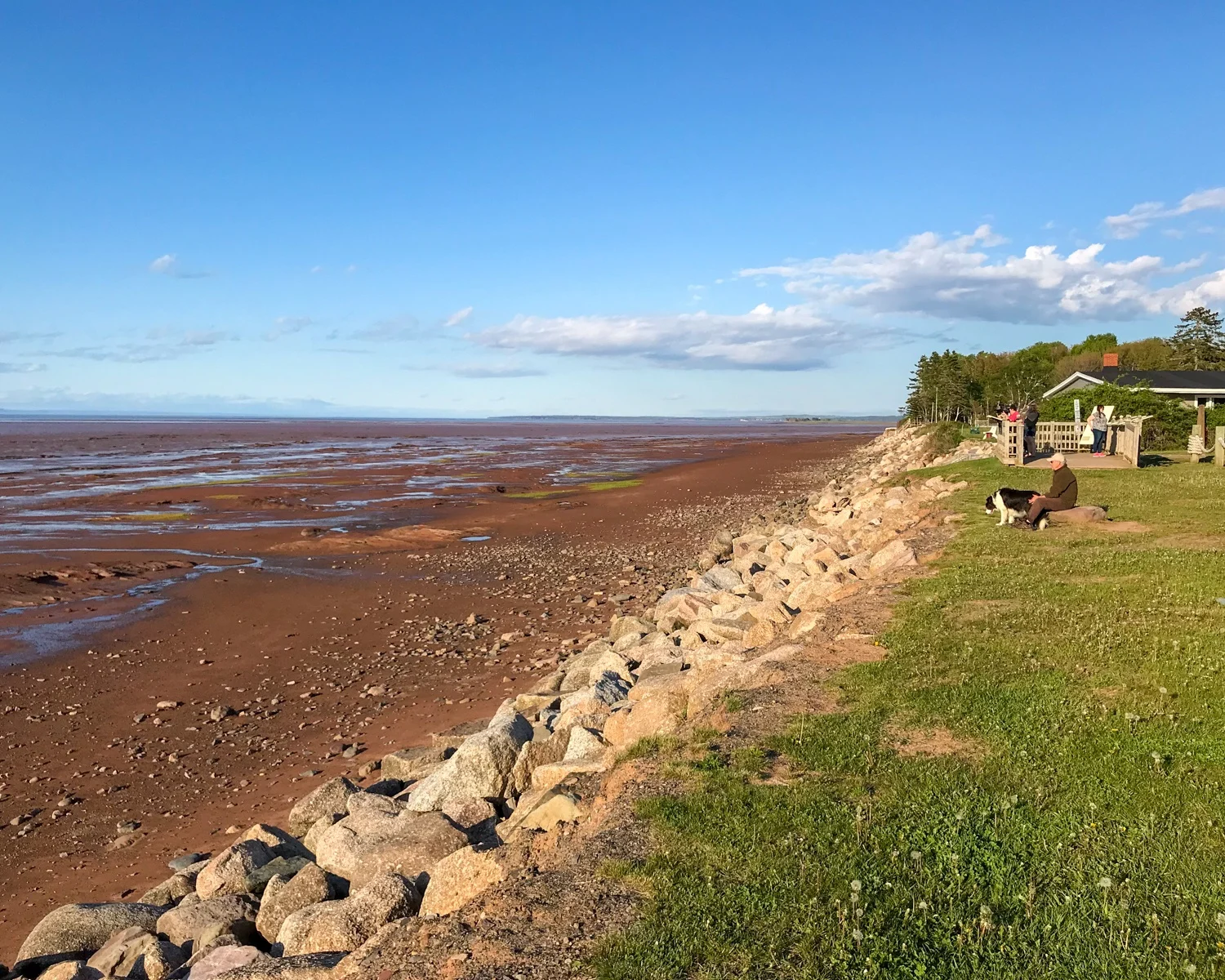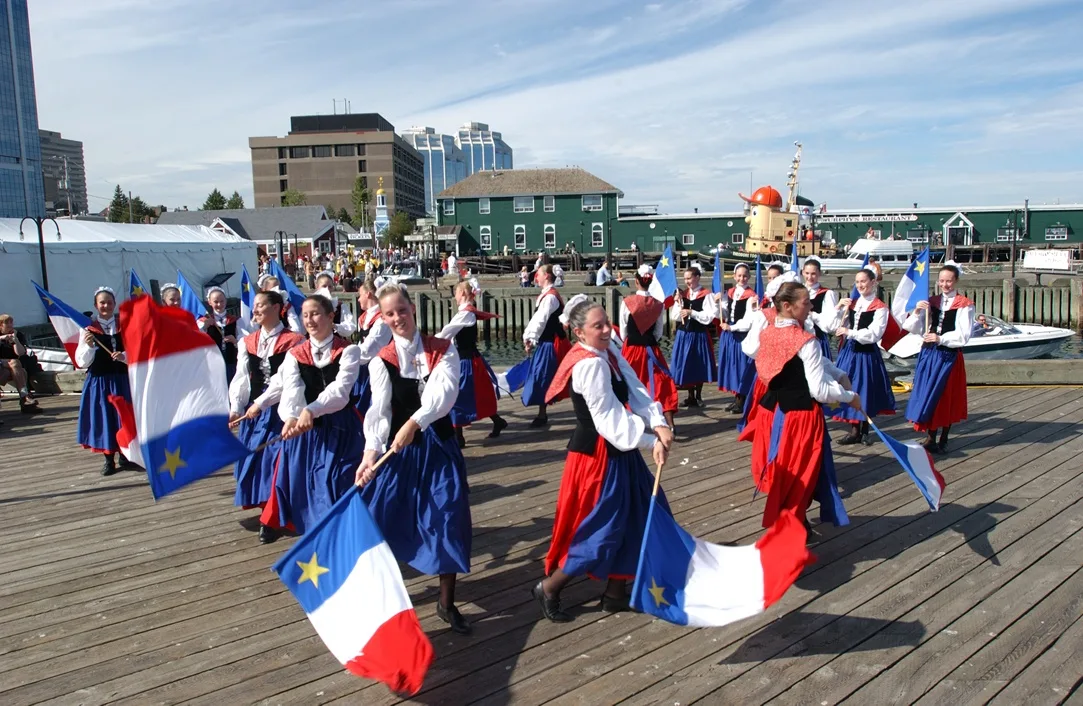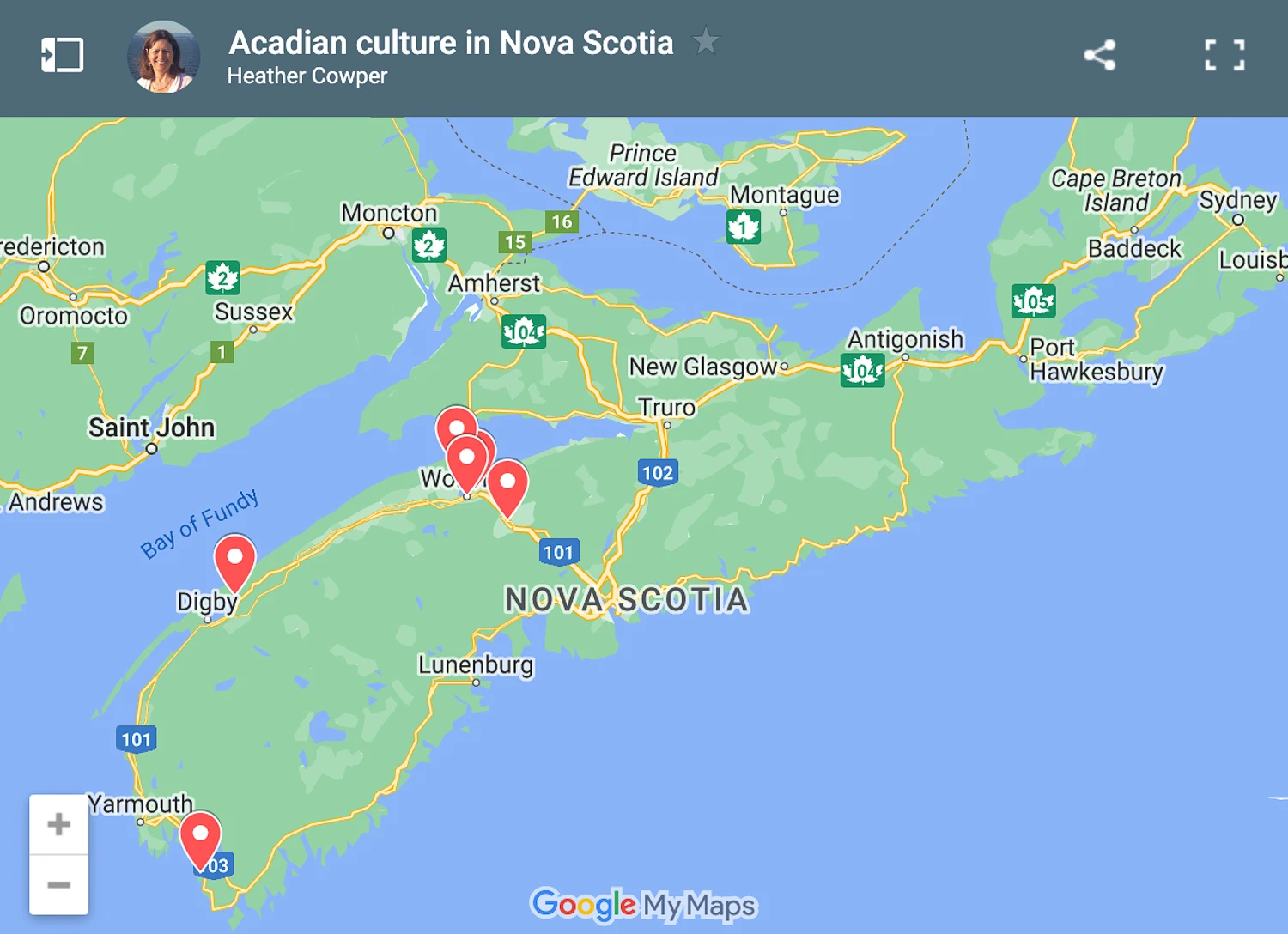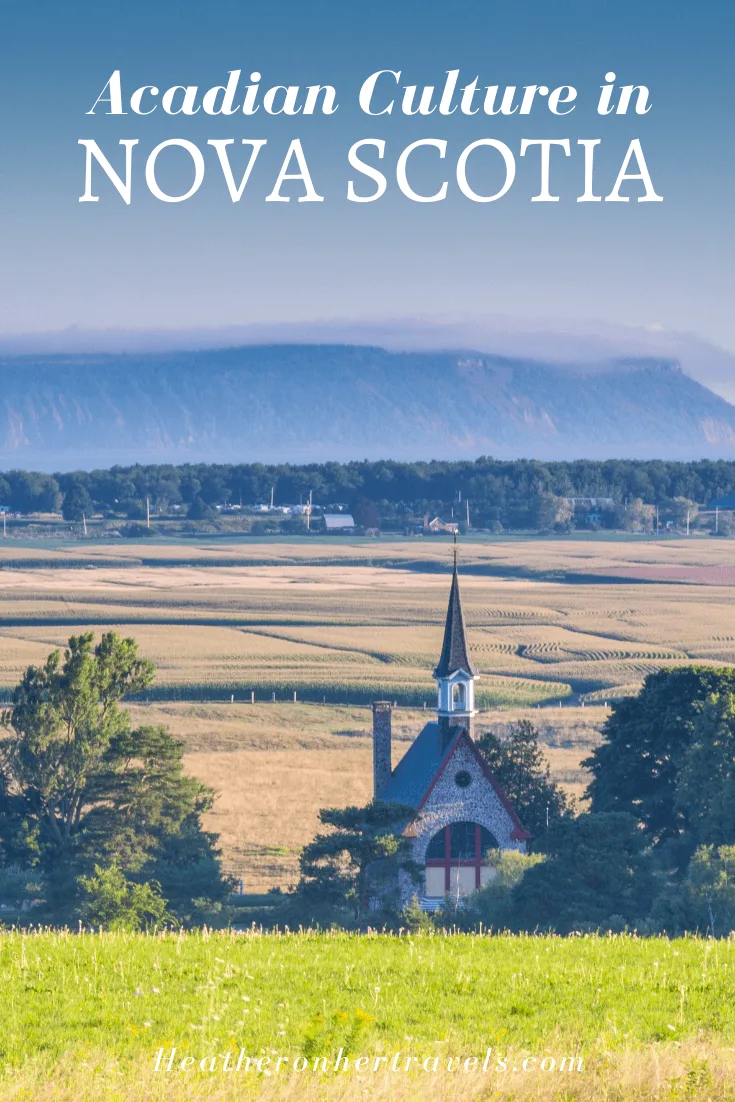In the land of present day Nova Scotia, far across the sea from their homeland, French settlers came in the 17th century to live among the meadows and saltmarsh by the Bay of Fundy. They made their home among the local Mi’kmaq peoples around the village of Grand-Pré, establishing a distinct Acadian culture in Nova Scotia.
On our visit to Nova Scotia we visited the memorials of the Grand-Pré National Historic Site to learn more about Acadian culture in Nova Scotia and rediscover these stories of Canada’s past.
This article may contain affiliate links that provide commission on purchases you make at no extra cost to you. As an Amazon Associate I earn from qualifying purchases.
Using a sophisticated system of channels and dykes the settlers drained the land bordering the Minas basin to create fertile farmland. But in 1755 the farmers were caught up in the struggles of the British and French for power in Canada.
Farmers were torn from their adopted land known as Acadia. They were deported by the British in a tragedy that became embedded in Acadian history. Families were separated and lovers torn apart.
After the war a few returned to resettle along the Bay of Fundy and other areas of Canada to create a new Acadia in Nova Scotia. Their unique culture drew on their French roots and is still strong today.
The history of Acadian culture in Nova Scotia
In 1604 the French explorer Samuel de Champlain founded a small colony near the Bay of Fundy in Nova Scotia. Port Royal became the capital of the French claimed lands. As more settlers arrived from France, the population spread through present day Nova Scotia, New Brunswick, Prince Edward Island and Cape Breton Island.
This colony of the New France territories of North America became known as Acadia, stretching across the present day Maritime Provinces of Canada. But Acadian lands were contested through the 17th and 18th century by both the French and English. By 1710 the English had taken over the French settlement of Port Royal and their lands in Nova Scotia.
Where did the Acadians come from?
The area of the Annapolis Valley and the Minas basin that we visited on our Nova Scotia trip enjoys a warm microclimate, sheltered by the Blomidon Ridge that overlooks the bay. We drove up to the Blomidon lookoff, a point on the escarpment that gives wonderful views over the patchwork of fields and vineyards.
From here we could see across the bay to the town of Wolfville and the Grand-Pré historic site, surrounded on three sides by water. This area of Acadian farmland is one of three UNESCO Heritage sites in Nova Scotia.
The area was settled in the 1680s by the Acadian community of French settlers who drained the salt marsh with dykes that you can still see today. Now nothing remains of the two villages of Grand-Pré and Hortonville that once stood in this area.
Because of the unique farming landscape and cultural significance this area was made a UNESCO World Heritage Site in 2012. The expulsion known as the Grand Dérangement is commemorated in an interpretation centre and other memorials that you can visit.
Why were the Acadians deported?
As we drove around the area, we came across the pretty memorial chapel of Saint-Charles-des-Mines. It was built on the site of the Catholic church that served the village of Grand-Pré.
Surrounded by apple orchards and gardens, this chapel was built in 1922 as a monument to the Acadians. Although it was not open at the time of our visit, inside you can see information about the events that took place on this site.
In 1755 the British had taken over the Acadian lands in Nova Scotia. At the start of the Seven Years War in America, the governor wanted to ensure that there was no resistance from the Acadian people. Though most of them had remained neutral during previous hostilities between French and British forces.
The Grand Dérangement in Nova Scotia
He ordered the Acadians to make an oath of allegiance to the British Crown. Most refused since it could mean fighting against friends and family supporting the French.
There followed what became known as the Grand Dérangement. This was the forcible removal of the Acadian people from their lands and deportation to the British controlled parts of America or to France.
In August 1755, a large contingent of British soldiers arrived at the village of Grand-Pré. They set up headquarters at the church of Saint-Charles-des-Mines, calling in all the men and boys who were imprisoned there for 5 weeks.
An order of deportation was announced at the church and ships transported around 2000 Acadians from the area. In the process many families were separated and sent on different ships, sometimes never to see each other again.
Grand-Pré National Historic Site
Near the memorial chapel is a visitor and interpretive centre. Here you can find out more of the history of the Acadians who suffered deportation between 1755 and 1762.
Because of the trauma created by the Grand Derangement, Grand-Pré is considered a memorial site. It has become a destination for Acadians from all over the world to discover their roots. The visitor centre houses a multimedia theatre, art gallery, and information about the Acadian history and is surrounded by gardens and a picnic area.
If you don’t have a car, check out this half day small group tour of the Annapolis Valley that includes a visit to Grand-Pré National Historic Site.
During the years of war between 1755 and 1762, around 10,000 Acadians were deported from their lands. They were dispersed in the American colonies, England and France.
After 1764 when the war had ended, some of those who had left were allowed to return and settle in Nova Scotia. Others created a new community in Louisiana which formed the Cajun culture, the name being derived from the word Acadian.
More info: Grand-Pre National Historic site | Experience Grand Pre
The story of Evangeline
Close to the chapel at Grand-Pré National Historic Site there’s a statue of Evangeline. She is the heroine of the epic poem by Longfellow, Evangeline: A Tale of Acadie, published in 1847.
This epic poem tells of Evangeline, the young Acadian girl who was separated from Gabriel her betrothed on their wedding day. After spending years searching for him, Evangeline finds him gravely ill being tended by nuns, only to have him die in her arms.
Longfellow had heard this supposedly true tale of separated lovers from a friend but had never visited the area of Grand-Pré. Yet he manages to capture the idealised view of the life of the farmers and the trauma of the separation of so many Acadian families.
Stay at the Old Orchard Inn Resort and Spa just outside Wolfville
The Evangeline Poem by Longfellow
Acadia has come to represent through tales such as Longfellow’s epic Evangeline poem, an idyllic image of peaceful farming life and a sense of home and belonging.
In the Acadian land, on the shores of the Basin of Minas,
Distant, secluded, still, the little village of Grand-Pré
Lay in the fruitful valley. Vast meadows stretched to the eastward,
Giving the village its name, and pasture to flocks without number.
Waste are those pleasant farms, and the farmers forever departed!
Scattered like dust and leaves, when the mighty blasts of October
Seize them, and whirl them aloft, and sprinkle them far o’er the ocean
Naught but tradition remains of the beautiful village of Grand-Pré.
You may also enjoy: Our fantastic Nova Scotia road trip – 3 day itinerary
The haunting tale of Evangeline is remembered in many places around Nova Scotia, including the nearby Evangeline beach overlooking the Minas Basin. As the Bay of Fundy has such a large tidal range, the mud flats were exposed when we visited. This created a shimmering mirror of shallow water and a peaceful spot to sit and contemplate the story of Acadia.
Check out this half day small group tour of the Annapolis Valley that includes a visit to Grand-Pré National Historic Site.
You can also drive along The Evangeline Trail. This scenic highway runs all along the coast of the Bay of Fundy to the Western Yarmouth and Acadian shore.
The trail connects Wolfville and Yarmouth, while passing through many of the old Acadian farmlands and coastal settlements. Visit the Sentier Acadie Historique website (Historic Acadian trail) for lots of information about the places to visit in Nova Scotia that are significant in the Acadian story.
Read more: 10 fun things to do in Halifax, Nova Scotia
Stay: The Old Orchard Inn Resort and Spa at Wolfville
We stayed that night at The Old Orchard Inn Resort and Spa, just outside the town of Wolfville. It is set on the high ground with views over the farmland of the Annapolis valley and orchards that give the hotel its name.
The three story modern hotel has around 100 rooms. Some rooms feature views over the valley and others like ours on the ground floor which are drive-up, with car parking immediately outside.
We enjoyed our dinner in the high ceilinged dining room. It incorporates traditional stonework and reclaimed oak beams, to recreate the feel of an Acadian farmhouse.
The Old Orchard Inn is located just outside the town of Wolfville. It makes an ideal base for visiting the Grand-Pré National Historic Site which is a short drive away. An aperitif on the patio, relaxing on the wooden chairs with views over the old orchards and valley made a great end to our day exploring the Acadian sites and northern shore of Nova Scotia.
Acadian Day and the Acadian Flag
If you drive along the Evangeline Trail and the shore of the Bay of Fundy, you’ll pass through many coastal communities where you may see the Flag of Acadia flying. It was adopted in 1884 with the French tricolour of red, white and blue overlaid with a yellow star in one corner. The star represents the Virgin Mary, since most Acadians are Catholic.
This flag is seen everywhere at local celebrations on 15 August each year, which is National Acadian Day. Acadian communities love to celebrate their Acadian culture.
If you happen to be visiting Nova Scotia during the celebrations, you’ll see everyone dressed in red white and blue, waving the Acadian flag. Acadian folk music is played and during the noisy parades you’ll hear clattering and banging of drums in the Tintamarre tradition.
Acadian food in Nova Scotia
In the Acadian communities of Nova Scotia, you may find some of the tasty Acadian dishes on restaurant menus. Many are based around potatoes, turnips, hearty vegetable stews, pork, chicken and other farm produce. Try a few of these dishes if you get the chance.
Fring Frang – a pancake made from grated potatoes and fried in butter
Râpure – a pie made from grated potatoes with chicken or pork
Poutine râpée – a dumpling made from grated or mashed potato stuffed with a pork filling, which is often served as a holiday or celebration dish.
Coques frites – fried clams that are dug up on the mud flats in the Bay of Fundy and Minas Basin.
Pets de sœur – a pastry a bit like a cinnamon roll, that can also be made with molasses.
Read more: Delicious Canadian Food – 40 food experiences to make you fall in love with Canada

Stay at the Old Orchard Inn Resort and Spa just outside Wolfville
Where else to find Acadian culture in Nova Scotia
Les Trois Pignons Cultural Centre
Les Trois Pignons Cultural Centre is located in the Cheticamp region on the North West tip of Cape Breton. The cultural centre is open between May and October.
Here you’ll find many antiques and objects that illustrate Acadian home life, including an extensive collection of hooked rugs, both traditional and contemporary. Hooked rugs are a big part of the Acadian craft tradition using coloured wool pulled through jute in colourful designs that depict farming and fishing country life.
The Mi-Carême Interpretive Centre
Mi Careme interpretive centre is also in Cape Breton and not far from Les Trois Pignons, located on the picturesque Grand Etang harbour. The Mi-Carême is a carnival tradition (it literally means the middle of Lent) that the Acadian settlers brought with them from France. The mockery and laughter contrasts with the austerity and fasting of Lent.
At a Mi-Carême fete, people will dress up in costume and put on colourful masks, then visit neighbours which results in a fun guessing game of who’s who. The Mi-Carême centre has displays of the papier mache masks and hosts craft sessions where you can make your own carnival mask. Enjoy other events with traditional Acadian music, dancing and food.

Le Village Historique Acadien
Le Village Historique Acadien is a traditional Acadian Village on a 17 acre site that overlooks the Pubnico Harbour. The salt marshes here were used by the Acadians and the Mi’kmaq First Nation people to gather clams and shellfish from the mudflats. Marsh grasses were gathered for basket making and cattle fodder.
At the village, you can get a sense of Acadian home life. Visit traditional style houses, a blacksmith shop and animal enclosures. Explore the root cellar used before refrigeration to keep root crops from freezing in winter and produce cool in summer.
Port Royal National Historic site
The Port Royal National Historic Site is a reconstruction of an enclosed wooden compound, known as the Habitation. Established by Samuel Champlain, the compound was for the first French settlers in the region of Nova Scotia.
The timber buildings on four sides of a courtyard created a fortified compound with a wooden palisade for additional protection. Re-enactors in costume will explain what daily life was like for the first settlers. You can imagine how they lived with furnishings of the period, a bakery, forge, kitchen and store rooms.
Fort Edward National Historic site
The Fort Edward National Historic site. Fort Edward was built at a strategic viewpoint overlooking the Avon and St Croix rivers. It was built by the British in 1750 to assert their authority over the Acadian settlers and the local Mi’kmaq people.
The wooden military blockhouse was used as a barracks for the soldiers. It was here that about 1200 Acadians were imprisoned before their deportation from Nova Scotia during the period of the Grand Derangement.
Read Next
If you enjoyed this article, you can also read about all the things to do in Halifax, where we started our tour of Nova Scotia.
Map of Acadian Culture in Nova Scotia
To see the places we visited click on the map of Nova Scotia Acadian Culture below.
Plan your trip to Nova Scotia
For more information to plan your stay in Nova Scotia visit Nova Scotia Tourism website. For other things to see in Canada visit the Canada Tourism website.
If you need a travel guide for Nova Scotia, check out the Lonely Planet guide to Nova Scotia, New Brunswick and Prince Edward Island

Need a guide book for PEI? We recommend the Lonely Planet Nova Scotia, New Brunswick & Prince Edward Island guide
For accommodation check out these hotels in Nova Scotia
Be sure to also read my other articles from this trip;
10 fun things to do in Halifax, Nova Scotia
Our fantastic Nova Scotia Road Trip – 3 day itinerary
10 fun things to do in Charlottetown and Prince Edward Island
Pin It
This article was sponsored* by Nova Scotia tourism, who also provided some of the experiences mentioned.
* More info on my policies page
This article is originally published at Heatheronhertravels.com


